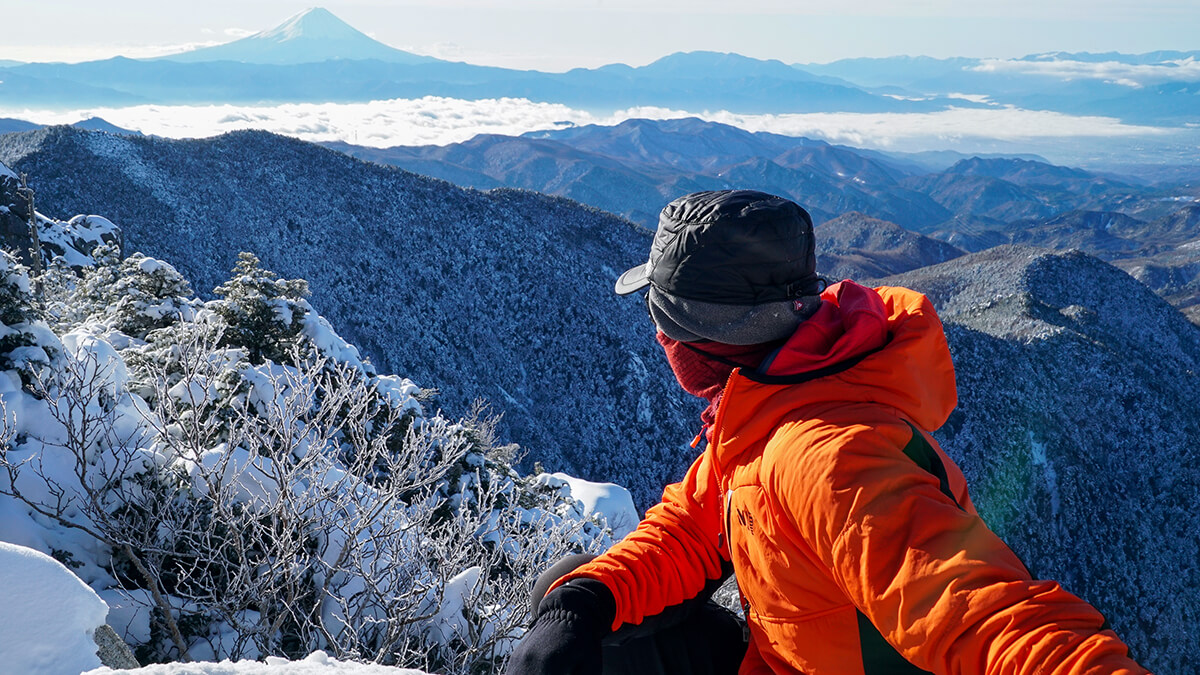
[Fall/Winter 2025] Down? Synthetic? Fleece? The key to comfortable layering is choosing the right material. The best mid-layers for mountaineering (cold weather gear) by type, and tips for choosing the right one.
Mid-layer = cold weather clothing?
When thinking about choosing clothes for mountain climbing or outdoor activities, it is said that the important thing is to be aware of layering.
Basically, it means layering clothes with different functions in three layers: the base, mid (mid) and shell. This means that you can act safely and comfortably even in harsh conditions where the environment is changing rapidly. This time, we have summarized the "midlayer," which plays a slightly more intricate role in the layering.
A mid-layer is clothing that is worn between what is called an underwear (base layer) and an outerwear (shell layer). When I first started climbing the mountain, I simply thought about it as "are you wearing a cold weather wear?", but it's not that simple to say that it would be comfortable as long as it keeps you warm. Various elements and functions are required to create optimal heat retention and comfort in any situation. As proof of this, even if you simply say "mid layer", the most suitable way to wear varies depending on the material, shape, thickness, etc. of the fabric, depending on the season, purpose, and effect.
As you climb the mountain for longer, there are many cases where one type of mid-layer cannot deal with it, such as being too cold or too hot, being too humid or too breathable, being too heavy or too bulky, depending on the situation. In that sense, mid-layers are incredibly profound, or rather, they can be said to be a troublesome mountain wear that will make amateurs cry.
So, this time we will introduce the best mid-layer models that suit a variety of situations, as well as the key points to consider when choosing what and what criteria to use to choose the perfect piece for you.
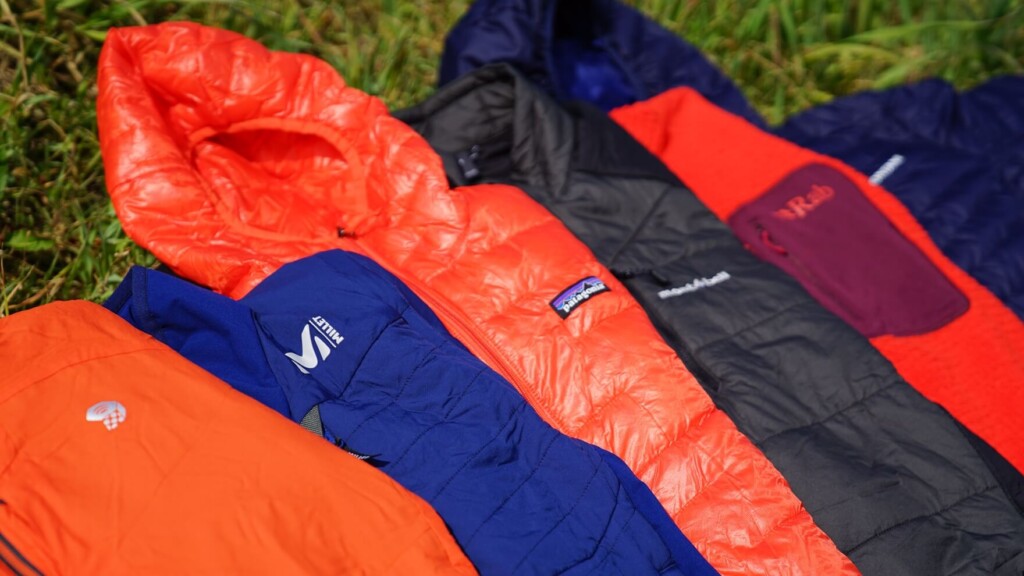
table of contents
- [By type] 7 recommended mid-layer items that you won't want to let go once you use them.
- Down insulation (spring-fall): Black Diamond Deploy Down 0.5 Full Zip Hoodie
- Down insulation (winter): Rab Mythic G Jacket
- Synthetic insulation for warmth (spring to autumn): milestone Heatwave Titanium Hoody
- Warm synthetic insulation (winter): Rab Cirrus Ultra Hoody
- Active Insulation (Lightweight): Arc'teryx Delta Hoody / Rab Evolute Hoody / Patagonia Nano Air Ultralight Full-Zip Hoody
- Active Insulation (Heavy): Teton Bros. Sub Hoody / Rab Xenair Alpine Flex Jacket
- Year-round fleece: Patagonia R1 Air Jacket
- How to choose: Tips for choosing a mid-layer (cold clothing) wisely
- summary
[By type] 7 recommended mid-layer items that you won't want to let go once you use them.
As someone who has been following the evolution of mid-layers for many years, I have chosen the models I personally use and would like to give my seal of approval to, both thin and thick. This list is largely based on personal preference, so please use it as a reference only.
Down insulation (spring-fall): Black Diamond Deploy Down 0.5 Full Zip Hoodie
As of 2025, this is one of the world's lightest down hoodies (full-zip jackets), making it useful year-round, not just in winter. Made with 1000FP premium goose down and a 4-denier shell fabric, it's surprisingly light at just 160 grams. Taking full advantage of down's incredible lightness and compactness, this model is sure to be a valuable ally for any mountain enthusiast seeking maximum warmth with minimal weight. In addition to this full-zip hoodie, there's also a web-exclusive pullover hoodie that's incredibly light at just 148 grams.
Although it is made with the highest quality down, the amount of down is minimal, so it may not provide sufficient protection against the cold in the middle of winter, but it will be the perfect talisman for mountain climbing from spring to early winter, when temperatures change drastically depending on the weather and it is difficult to predict what equipment to bring.
Down insulation (winter): Rab Mythic G Jacket
Rab Mythic G Jacket is a winter down jacket perfect for active mountaineers and hikers seeking lightweight comfort while maintaining the highest possible level of insulation. This is the ultimate masterpiece from Rab, the self-proclaimed "master of insulation." It boasts a premium 1000FP loft and an ultra-thin 7D Atmos™ nylon ripstop exterior. The lining features Rab's proprietary "TILT Technology," where every fiber is individually coated with titanium. This significantly reduces radiant heat loss and maximizes thermal efficiency without sacrificing breathability. Its warmth is instant, yet its light weight of less than 300 grams and compact size—the size of a clenched fist—makes it undoubtedly one of the most portable winter garments for minimalists looking to keep their winter backpacks tucked away.
Synthetic insulation for warmth (spring to autumn): milestone Heatwave Titanium Hoody
This season's highly anticipated newcomer, the milestone Heatwave Titanium Hoody, . Featuring Climashield® insulation, which combines lightness with excellent insulation, and a titanium sputtered lining, it's a clever innovation that maximizes warmth despite its light weight. Unlike down, it's made of synthetic fiber, so it's safe for mountain climbing, where there's a risk of getting wet. It's a warm and insulated garment from spring to autumn, and can also be used as activewear during harsh winters.
Warm synthetic insulation (winter): Rab Cirrus Ultra Hoody
This tough winter garment prioritizes insulation and durability, offering warmth, comfort, and loft for the ultimate winter mountaineering experience. Its PrimaLoft® ThermoPlume® insulation is so light and fluffy it could be mistaken for down, and its high insulation quality is so impressive it's practically comparable to down. The Rab Cirrus Ultra Hoody, with its generous use of high-performance insulation, excellent warmth and ventilation, and practical pockets, is a versatile and versatile model perfect for winter mountaineering. Its compact storage makes it ideal for winter mountaineering.
Active Insulation (Lightweight): Arc'teryx Delta Hoody / Rab Evolute Hoody / Patagonia Nano Air Ultralight Full-Zip Hoody
Active insulation, which has enhanced breathability and sweat-removal capabilities to reduce discomfort even in cold weather, is ideal for hiking and mountain climbing. However, even among these, for climbing in the autumn mountains, it's best to choose something that's not too thick (highly insulating), but also not too exposed and too windy, which can be cold. Therefore, it's best to choose something that's breathable, has moderate wind resistance, stretches for easy movement, and is as thin and lightweight as possible. Based on these criteria, our recommendations are listed below. The Arc'teryx Delta Hoody's OCTA and Delta Peak combination and the Rab Evolute Hoody's PrimaLoft Active Evolve and Motiv Aero combination are particularly excellent. If you prefer a little more wind resistance, the Patagonia Nano Air Ultralight Full-Zip Hoody is also convenient and can be used year-round.
Active Insulation (Heavy): Teton Bros. Sub Hoody / Rab Xenair Alpine Flex Jacket
For activities like snowy mountain climbing and backcountry skiing in the dead of winter, which involve intense sweating in bitterly cold conditions, it's important to have a jacket that can keep out cold air and wind while still allowing sweat to escape. With that in mind, the basic lining should be Active Insulation, which combines heat insulation with breathability and quick-drying properties, and ideally, it should have a windproof and water-repellent outer fabric that provides moderate wind protection. Another excellent model we recommend, offering ample mobility around the shoulders and elbows, is the Teton Bros. Sub Hoody . It combines lightweight, breathable, highly insulating, and stretchable lining "Stretch OCTA" with a softshell outer fabric that offers high performance throughout, making it ideal for active outerwear. It's been a favorite of mine for the past few years, and I prefer the hoodless version for layering.
Another jacket that's equally recommended is the Rab Xenair Alpine Flex Jacket . It features a windproof, breathable, and stretchy Pertex Quantum Air outer shell, breathable Primaloft Gold Insulation Active+ insulation , and stretch fleece side panels, making it flawless down to the smallest detail. While it's not as breathable the Sub Hoody , it does a better job of blocking wind and cold air, making it resistant to the cold and perfect as an outer layer.
Year-round fleece: Patagonia R1 Air Jacket
Fleece holds a special place in the hearts of Patagonia. Developed long ago when animal fur sweaters were the only winter wear available, the creators of this revolutionary synthetic winter garment continue to bring new fleeces to the outdoor scene, warmer, lighter, and more user-friendly, even now, more than 40 years later. Patagonia's latest and most highly recommended fleece is the R1 Air. The R1 series is synonymous with technical fleeces favored by mountain athletes worldwide, and this model represents a major evolution of that classic.
By deliberately abandoning the "versatility" of traditional fleece, this is an excellent technical fleece that offers optimal breathability, warmth, and a high level of comfort for more intense cold-season activities. The unique structure of the hollow-fiber jacquard fleece combines light weight, warmth, and breathability and quick-drying properties at an excellent level. I would definitely recommend wearing it over a base layer for trail running in autumn and winter, ski touring, climbing approaches, and fast-paced hikes in cold weather.
This full-zip jacket, which debuted in the 2025 season, features three pockets: two zippered pockets on each side and a chest pocket. Its slim silhouette makes it versatile enough to be used as both a mid-layer and an everyday outer layer. When used as a mid-layer in cold weather, it exceeded expectations, maintaining comfort without being too hot or too cold. Its excellent balance of warmth, breathability, and quick-drying properties makes it practically active insulation. You can choose from a variety of styles, including crew neck and full-zip hoodies, depending on your preference.
The elegant designs typical of Patagonia are also useful for trekking, climbing, backcountry, and if you want to, it's easy to use in any outdoor environment in winter, making it an excellent choice. Personally, I don't think I'll let it go 24 hours a day, whether on or off this winter.
How to choose: Tips for choosing a mid-layer (cold clothing) wisely
Point 1: Learn about layering
Before continuing as it is, I'll give you a rough review of the concept of layering (if you know, please skip it).
"Layering" outdoors refers to the theory of how to wear it to ensure a safe and comfortable atmosphere in harsh natural environments. Layering allows for quick removal of moisture from the clothes, mainly due to sweating, to keep the body dry, to keep the body constant (heating), and to block out the outside air, rain and snow, which can not coexist in one piece. Layering is not just about layering, but you can roughly complete it by layering layers (clothes) with the following three functions in order from the skin.
Base layer: absorbs sweat and passes it on the outside
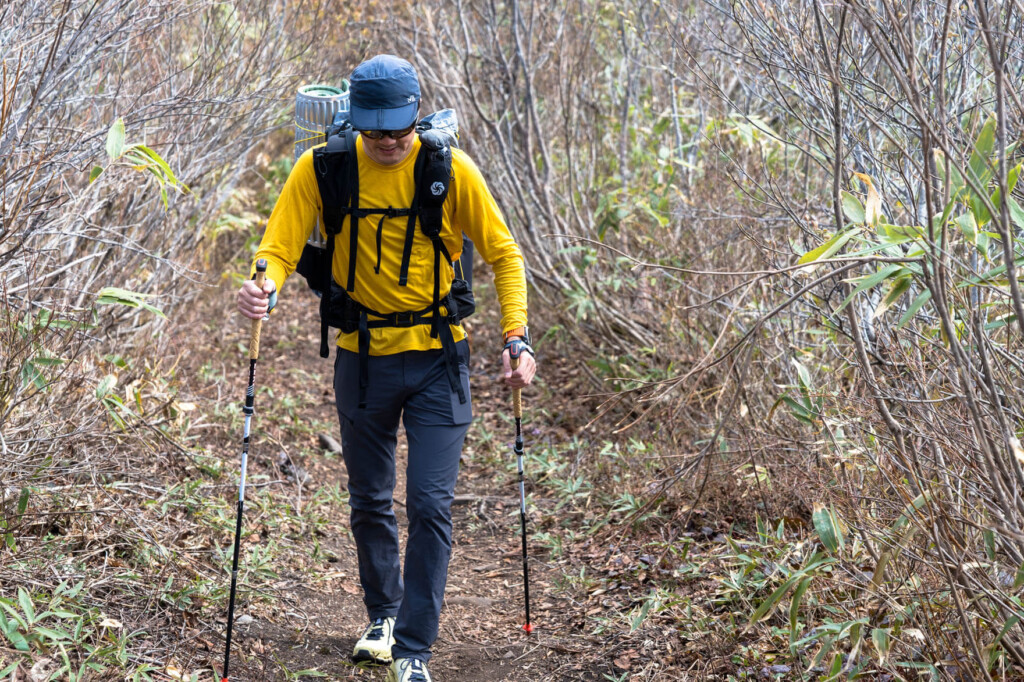
The layer that is worn directly on the skin is called a base layer. By sucking up the sweat that comes from your body and letting it escape (pass it to the top layer), it makes it easier to keep the skin dry and keep your body temperature constant, reducing the discomfort of clothes wet with sweat. For this reason, the fabric material is made from chemical fibers and wool, which have excellent moisture absorption and quick drying performance. In hot seasons, this is often used alone, and is the most worn clothing throughout the year.
Related Articles
Mid-layer: Heat retention (and moisture discharge)

The role of the mid-layer is simply heat insulation. A "air wall" is created by sandwiching clothes filled with padding between the external cold air and body temperature. This traps warm air near the surface of the body, keeping you warm and comfortable. Another important role is breathability, which allows moisture (water vapor) to be removed from the base layer. Unfortunately, no product is always comfortable no matter what season or activity. That's why mid-layers need to be smart, but I'll explain more about them later.
Shell Layer: Blocks wind, rain, snow and outside air (and releases moisture)
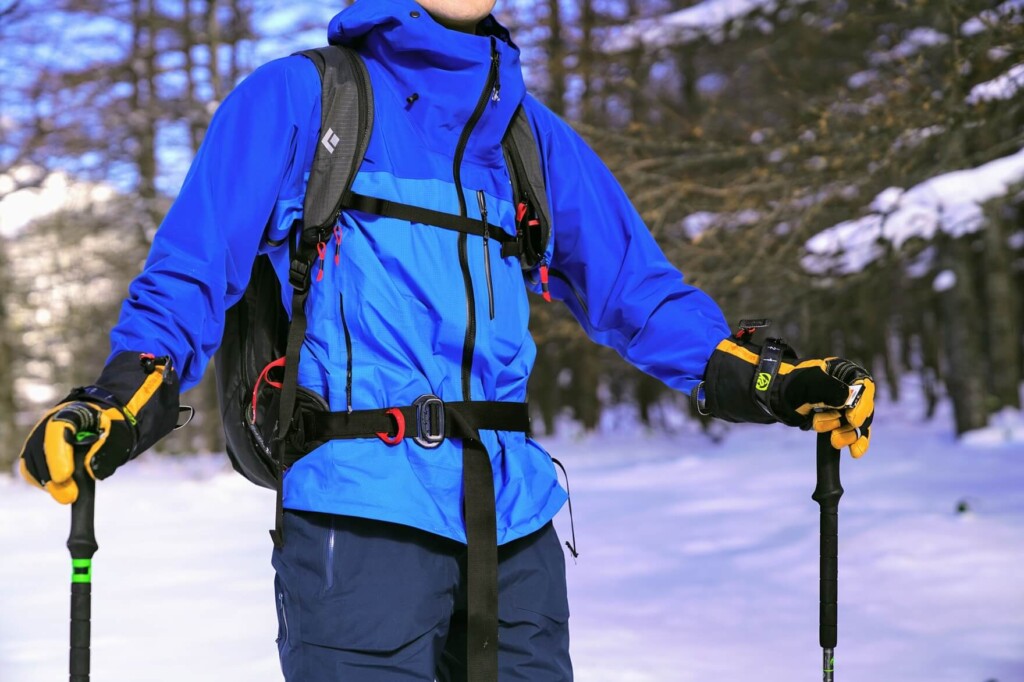
While the base midlayer was primarily responsible for keeping the inside of the clothing comfortable, the shell layer's role can be said to be primarily responsible for protecting the inside from the outside environment. It blocks out external irritations that can threaten comfort, such as cold air, rain, wind, and snow, and keeps the inside of your clothes safe. Specifically, by putting on a jacket made of waterproof and breathable materials such as GORE-TEX, it functions to prevent wind and water from entering from outside, while also allowing moisture from inside to escape. Depending on the weather conditions you expect, there are various types, from thin wind-proofing types to thick waterproof, windproof and highly insulating types.
Related Articles
Point 2: Learn about the types of typical mid-layers and their characteristics
Now that we have fully understood the role of layering, we will finally get to the heart of choosing a mid-layer. As mentioned above, the main role of the mid-layer is to "insulation and heat retention," but then, if you just want to choose a jacket with high heat retention, this is not that simple.
Sometimes they stay still when climbing mountains, sometimes they are active vigorously, sometimes they are a little chilly, sometimes they are freezing cold. There is no one yet that would provide just the right amount of comfort in every situation.
To achieve just the right amount of comfort in any situation where heat is needed, the simplest but most clever way to achieve different comfort levels is to use multiple mid-layers from different areas of expertise. To do this, you first need to know about the typical types of mid-layers to wear on the mountains.
Typical mid-layer 1: Down insulation
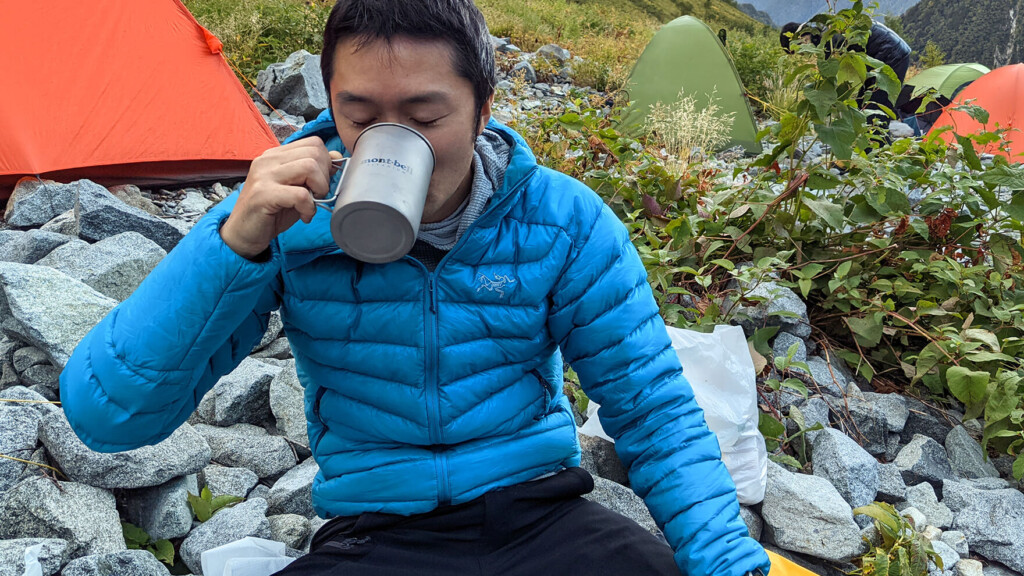
First of all, when it comes to outdoor winter clothing, down insulation (jackets) is a typical winter clothing that most people probably think of. The feathers collected from waterfowl are used as padding, and the structure is sealed with a front and back fabric with excellent windproof properties. When looking for materials from around the world, there are none of them that are on the right side of the heat insulation for lightness.
However, while it has outstanding insulation properties, it keeps warm without knowing how much it is, so it tends to be too hot and stuffy inside the clothes and become uncomfortable. Also, be aware that if it gets wet, its heat retention will significantly decrease. However, in recent years, many down products have been appearing using the latest technology to overcome these weaknesses. In any case, this is definitely the best winter clothing when you're still in extremely cold places or when you want to warm up in a situation where you don't have much exercise.
Typical mid-layer 2: Synthetic fiber insulation (heat-retaining type)
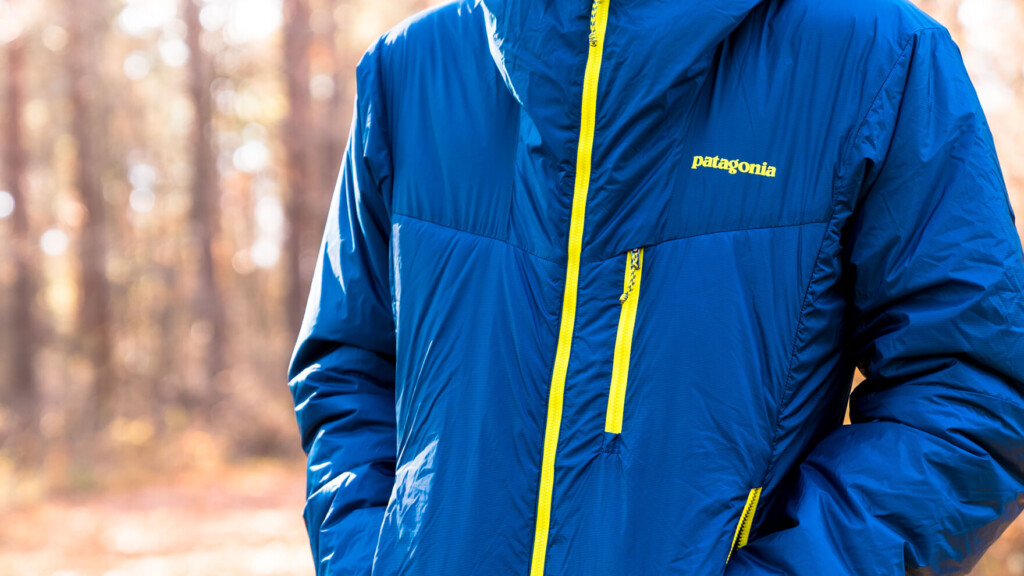
Next, the main intermediate clothing is synthetic fiber insulation, a jacket developed by mankind as a padding material to replace feathers, and is enclosed with padding, mainly made from polyester fibers. Its distinctive feature is that it has heat insulation per weight that is close to feathers, but is also strong against wetting. In the outdoors, its toughness does not lose its heat retention even when wet with sweat, rain, snow, etc. is an important advantage, and the more hard it is, the more the synthetic insulation is, the more it is, the more it is, the more it is. Another major attraction is the ease of maintenance, which is easy to wash and is also a great feature. Typical padding materials include Thinsulate, Primaloft, Coreloft, and Excelloft.
The high heat retention, which has never been able to keep up with down no matter how far it goes, has steadily improved in recent years with high-tech materials such as aerogel, so its performance and usability have definitely been increasing.
By the way, strictly speaking, recently there have been cases where padding is neither down nor synthetic, such as padding made from wool fibers, but for now, I think it is safe to summarize these into this category.
Related Articles
Typical mid-layer 3: Active insulation (wearing type during action)

The other is the next generation mid-layer "active insulation" jacket, born as a derivative of the above synthetic fiber insulation, and has become completely established over the past few years.
In terms of material, it is a pasted synthetic fiber padding, but although it does not match the above type in terms of heat retention per weight, it has the characteristic of drying faster and breathable, and keeping the inside of the clothing dry in the unlikely event that you sweat.
In addition, many models have stretchy properties and are more suitable for active scenes, and are surprisingly comfortable even when you sweat and act vigorously in low temperatures, so you can continue wearing them even when you are active.
Active insulation jackets are, so to speak, "movable winter clothing." It is always comfortable to wear even when you leave it on during winter activities, so this is a convenient intermediate wear that is so convenient that it is essential not only for mountain climbing in the winter, but also for backcountry where it is difficult to put on and take off.
New materials are being released one after another from various manufacturers, including Toray 3DeFX+, Patagonia full range, Polartec® Alpha®, THE NORTH FACE Ventrix™, and Primaloft® Gold Active.
Typical mid-layer 4: Fleecewear
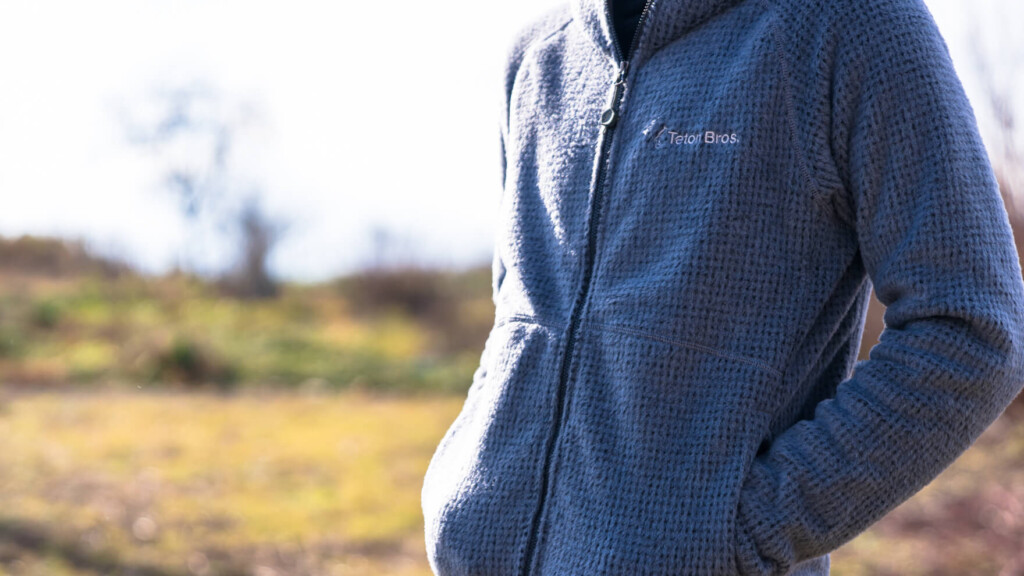
Fleecewear was developed in the late 1970s as an ideal mountain sweater that was warm but not absorbed water (quickly drying), and quickly became the main focus of outdoor winter clothing, and is still an indispensable part of our needs.
Fleece is light, warm, easy to move around, quick-drying, and does not lose its heat retention even when wet, making it a very balanced outdoor cold weather wear, but looking at it with a large group, it has recently been a stalwart of other materials. This is because it has inferior weight, storage and heat retention compared to down, and is faster-drying and breathable compared to active insulation.
However, as technology advances, various fleeces have been created to meet diverse needs, including those with windproof properties, those with reduced bulk, and those with greater stretchability over the years, and it is a shame to dismiss them as something that is still over.
Point 3: Match the timing and situation to wear
Below is a table that summarizes the typical midlayers mentioned earlier and their general features.
Of course, performance can increase or decrease depending on the individual product's individuality, the thickness of the fabric, and the quality and quantity of the filling, so please consider it as a guide only.
| kinds | Down insulation | Synthetic fiber insulation (heat-retaining type) | Active insulation (wearing type during action) | Fleecewear |
|---|---|---|---|---|
| Heat-retaining material | down | Chemical fibers, etc. | Chemical fiber | Chemical fiber |
| Insulation per weight | ◎ | ◯ | △ | ◯ |
| Compact | ◎ | ◯ | ◯ | △ |
| Breathable and quick-drying | × | △ | ◎ | ◯ |
| Strength against wetting | × | ◎ | ◯ | ◎ |
| Comfortable to wear | ◎ | ◯ | △ | ◎ |
| Ease of movement | △ | ◯ | ◎ | ◎ |
| Windproof | ◎ | ◎ | △ | △ |
| Easily care | △ | ◎ | ◎ | ◎ |
By referring to the comparison table above, you can narrow down the types of winter clothing you are looking for. As you can see here, each of the winter clothing is largely functionally complementary, and not all of it is OK to have one. For this reason, it is best to be able to use different types of safety and comfort depending on the situation, and it is currently the best option to always bring two down jackets and active insulation. However, of course, there is no guarantee that this will be possible every time due to budget or physical constraints, and it is important to determine what each course is important and choose the clothing you will wear and carry. Choosing outdoor tools is a challenge and fun thing to do.
However, for those who want to know the answer more easily, I have summarized the following two questions to choose the best midlayer, although a little rough: Of course, there are all-purpose models in each category that combine many functions, so please note that it is not possible to draw a general line.
Question #1: When should I wear it?
The first question to ask is: "Do you wear the middle one when it's stopped (when still) or should you wear it while you're still?"
For those who assume that they don't move (do not sweat) when wearing winter clothes, there are two options: down insulation or synthetic fiber insulation (a type that emphasizes heat retention). On the other hand, if you're chilly even when you're stopped or moved in the winter, and you're looking for something to wear while you're still in the mood, you can choose between active insulation (a type worn while you're in the mood) or fleece wear.
Question 2: What are the concerns about wearing it?
If you choose a mid-layer that is useful when you are still standing, the next question you should think about is, " Will you wear it in cases where there is less risk of getting wet, or if you wear it on a mountain hiking trip where you are worried about getting wet ?" Each of these derives the following types:
| Wear when it's stopped | |
|---|---|
| There's little concern about getting wet | Down insulation |
| It may get wet | Synthetic fiber insulation (heat-retaining type) |
If you choose a mid-layer that will be useful for wearing while you are active, there are subtle differences from here onwards, but it's a good idea to consider whether you place more emphasis on breathability and quick drying, or balance and comfort It is recommended to choose the following types for each:
| Wear while you're on the move | |
|---|---|
| Sweat violently | Active Insulation |
| The sweat is pretty good | Fleecewear |
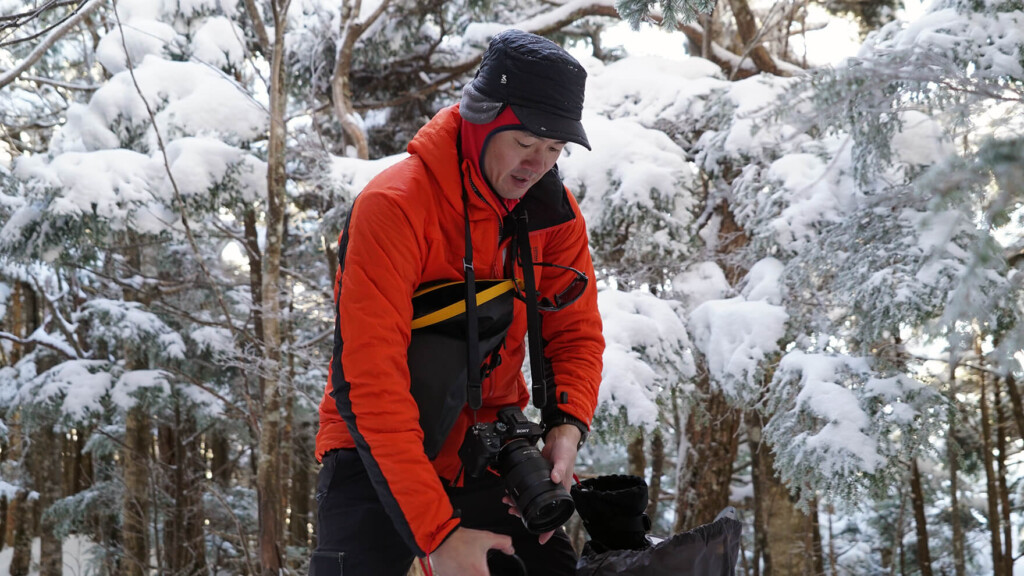
Point 4: Other important points to consider when choosing cold weather clothing
Based on my personal experience, the following points should be taken into consideration when choosing a mid-sized outfit.
When using as an outerwear, it is convenient to have hand warmer pockets on the left and right, but it's not necessary if you want to wear it as a middle-wear item. In fact, the chest pocket is convenient at the time.
Food
There is a difference between whether or not the head can be protected from cold without having a hood. Naturally, if you think about it alone, it is safe to assume that a hood will improve your cold protection, but if possible, it would be better to think about it as a whole layering. For example, if the base layer and hoods, mid layer and outerwear have hoods, it will cause a considerable traffic jam around the neck, which will actually cause heat, bulky and suffocating. At the very least, if the outerwear has a hood and the neck can be kept warm with a balaclava or something similar, you can think that's enough. In that case, a jacket without a hood is sufficient for the middle wear. In fact, I really like that pattern.
The mainstream is a stretchy material that fits the size of your head, or one that can be adjusted with a drawstring. If the pattern is not that right, it can be uncomfortable because if it doesn't fit your size, air will leak or your vision will be blocked if it is over. Also, when it comes to warm-weather clothing, which is intended to be outer, it is often made larger with the assumption that it will be worn over a helmet, so this may vary in preference.
Outer fabric (whether to wear it as an outerwear)
When layering in the mountains, winter clothing is generally considered to be an intermediate piece to wear under the shell, but clothes made up of only insulation such as sweaters and fleece are light, breathable and easy to get rid of sweat, and have the disadvantage that they are difficult to use as outerwear in the mountains. On the other hand, a type with a windproof, water-repellent shell fabric that has a padding that is sandwiched between the two can be used as an outerwear, but when used as an intermediate piece, it will waste a single piece of shell fabric in terms of breathability. It's not that which is better, but it's best to use it according to your needs.
summary
I've come up with my own best choice for choosing a mid layer. Of course, this is just an ideal type, and it's fun to create your own style by ingenuity within the limited equipment, and it goes without saying that it's important. In the "uncomfortable = dangerous" outdoors, we hope that it's fine line-up for you, for example, an unexpected snowstorm can be a great experience with the right outfit, or a terrifying experience you never want to experience again due to the wrong outfit, and we hope you will be able to find the mid-layer ideal for you.












 [Fall/Winter 2025] This season's best hard shell jackets, essential for the harsh snowy mountains, and tips on how to choose them safely
[Fall/Winter 2025] This season's best hard shell jackets, essential for the harsh snowy mountains, and tips on how to choose them safely [Fall/Winter 2025] We've selected the best synthetic insulation for fall/winter outdoor activities from approximately 200 models, and here are some tips on how to choose the right one.
[Fall/Winter 2025] We've selected the best synthetic insulation for fall/winter outdoor activities from approximately 200 models, and here are some tips on how to choose the right one. [Fall/Winter 2025] Recommended base layers for this season and purpose, selected after comparing over 200 items, and how to choose the perfect one for you
[Fall/Winter 2025] Recommended base layers for this season and purpose, selected after comparing over 200 items, and how to choose the perfect one for you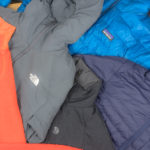 Comparative review: I learned the best choice of synthetic insulation jackets after wearing this winter
Comparative review: I learned the best choice of synthetic insulation jackets after wearing this winter